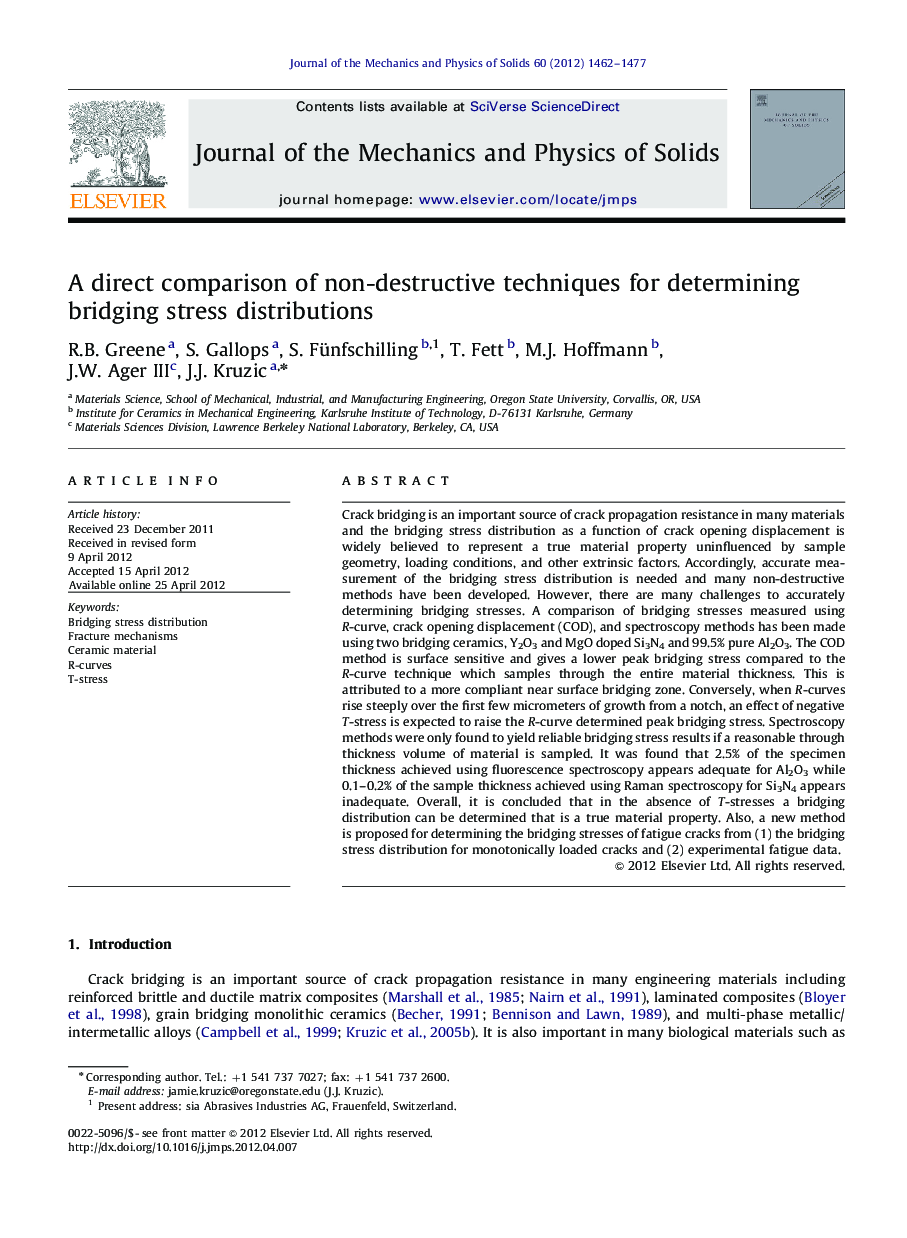| کد مقاله | کد نشریه | سال انتشار | مقاله انگلیسی | نسخه تمام متن |
|---|---|---|---|---|
| 797359 | 1467098 | 2012 | 16 صفحه PDF | دانلود رایگان |

Crack bridging is an important source of crack propagation resistance in many materials and the bridging stress distribution as a function of crack opening displacement is widely believed to represent a true material property uninfluenced by sample geometry, loading conditions, and other extrinsic factors. Accordingly, accurate measurement of the bridging stress distribution is needed and many non-destructive methods have been developed. However, there are many challenges to accurately determining bridging stresses. A comparison of bridging stresses measured using R-curve, crack opening displacement (COD), and spectroscopy methods has been made using two bridging ceramics, Y2O3 and MgO doped Si3N4 and 99.5% pure Al2O3. The COD method is surface sensitive and gives a lower peak bridging stress compared to the R-curve technique which samples through the entire material thickness. This is attributed to a more compliant near surface bridging zone. Conversely, when R-curves rise steeply over the first few micrometers of growth from a notch, an effect of negative T-stress is expected to raise the R-curve determined peak bridging stress. Spectroscopy methods were only found to yield reliable bridging stress results if a reasonable through thickness volume of material is sampled. It was found that 2.5% of the specimen thickness achieved using fluorescence spectroscopy appears adequate for Al2O3 while 0.1–0.2% of the sample thickness achieved using Raman spectroscopy for Si3N4 appears inadequate. Overall, it is concluded that in the absence of T-stresses a bridging distribution can be determined that is a true material property. Also, a new method is proposed for determining the bridging stresses of fatigue cracks from (1) the bridging stress distribution for monotonically loaded cracks and (2) experimental fatigue data.
► Methods of bridging stress determination are quantitatively compared.
► Free surfaces and T-stresses were found to affect results.
► Sampling only 0.1–0.2% of sample thickness gives highly scattered results.
► Sampling 2.5% of sample thickness gives apparent through thickness average.
► A new method to deduce fatigue crack bridging stress distributions is presented.
Journal: Journal of the Mechanics and Physics of Solids - Volume 60, Issue 8, August 2012, Pages 1462–1477